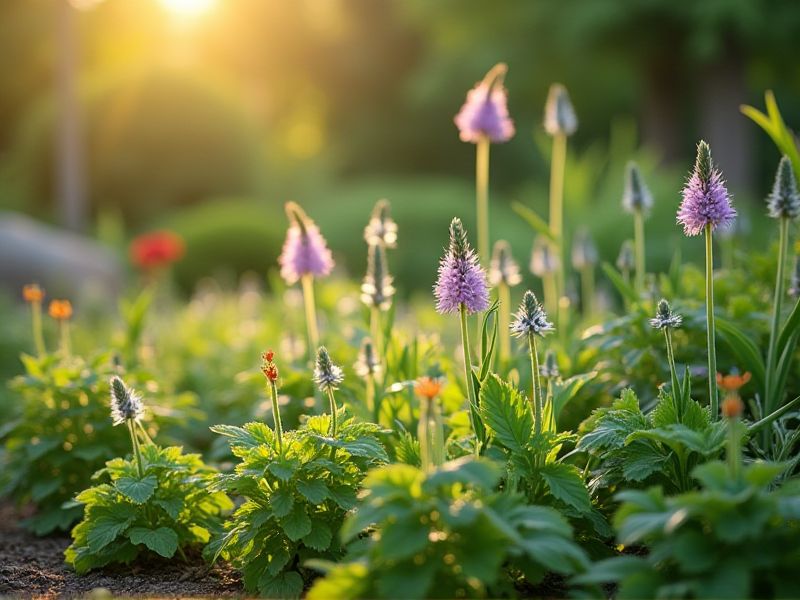
Native plants that require little water are crucial for sustainable landscaping and conservation efforts. Species such as lavender, desert marigold, and black-eyed Susan are drought-resistant, thriving in arid conditions while attracting pollinators. By selecting these plants for your garden, you can significantly reduce water usage and promote biodiversity. Incorporating these varieties not only enhances the visual appeal of your outdoor space but also supports local ecosystems. Understanding the benefits of native, low-water plants is essential for making environmentally friendly choices.
List of some Native plants that require little water
- Creosote Bush (Larrea tridentata)
- California Poppy (Eschscholzia californica)
- Lavender (Lavandula spp.)
- Agave (Agave spp.)
- Red Yucca (Hesperaloe parviflora)
- Blue Grama Grass (Bouteloua gracilis)
- California Buckwheat (Eriogonum fasciculatum)
- Desert Marigold (Baileya multiradiata)
- Purple Coneflower (Echinacea purpurea)
- Russian Sage (Perovskia atriplicifolia)
Important things about Native plants that require little water
Drought Tolerance
Native plants that are drought-tolerant have adapted to thrive in arid conditions, making them ideal choices for sustainable landscaping. Examples include the California Poppy, which features vibrant orange flowers and requires minimal irrigation once established. Another excellent option is the Desert Sage, known for its aromatic foliage and ability to attract pollinators while flourishing in dry soils. By incorporating these hardy varieties into your garden, you contribute to water conservation efforts and support local ecosystems.
Soil Adaptability
Native plants thrive in soil types that are well-adapted to their regional climates, often requiring minimal watering once established. Species such as Lavender, California Poppy, and Desert Sage are exemplary choices, exhibiting resilience in drought-prone environments. These plants typically possess deep root systems that efficiently access moisture, reducing the necessity for supplementary irrigation. By incorporating native flora into your garden, you support local ecosystems and promote biodiversity while conserving water resources.
Native Habitat Compatibility
Native plants that require little water are ideal for arid regions or areas experiencing drought, as they have adapted to survive with minimal moisture. Examples include the desert sage (Salvia dorrii) and the prickly pear cactus (Opuntia spp.), both renowned for their resilience and low water needs. Incorporating these plants into your landscape not only promotes biodiversity but also supports local wildlife, contributing to a healthier ecosystem. Opting for these drought-resistant varieties can significantly reduce your outdoor water usage while enhancing the natural beauty of your surroundings.
Wildlife Support
Native plants such as California poppy, lavender, and desert sage are excellent choices for low-water landscaping, as they thrive in dry conditions while attracting local wildlife. By incorporating these drought-resistant species into your garden, you can create a vibrant habitat for pollinators like bees and butterflies, contributing to local biodiversity. These plants not only require minimal irrigation but also enhance soil health by promoting ecological balance. Choosing native flora ultimately reduces water usage while offering a sustainable solution for environmentally conscious gardening enthusiasts.
Low Maintenance
Native plants such as the California poppy, sagebrush, and purple coneflower are excellent choices for low-maintenance gardens, requiring minimal water once established. These drought-tolerant species adapt well to local soil and climate conditions, significantly reducing the need for irrigation. By incorporating native flora into your landscape, you not only conserve water but also support local wildlife, including pollinators like bees and butterflies. Embracing native plants creates a sustainable garden while enhancing the biodiversity of your environment.
Seasonal Interest
Many native plants thrive in arid conditions, making them ideal for water-efficient gardens. Examples include the resilient desert marigold (Baileya multiradiata) and the drought-tolerant California poppy (Eschscholzia californica), both of which enhance local biodiversity. Native grasses such as blue grama (Bouteloua gracilis) and sideoats grama (Bouteloua curtipendula) not only conserve water but also provide habitat for wildlife. Incorporating these plants into your landscape not only reduces irrigation needs but also supports the local ecosystem, promoting sustainability.
Local Climate Resilience
Native plants such as succulents, agaves, and desert wildflowers are crucial for enhancing local climate resilience, as they thrive in arid conditions and require minimal water. These resilient species have adapted to their environments, promoting biodiversity while reducing irrigation dependence and conserving water resources. Incorporating native plants into your landscape not only supports local wildlife but also helps mitigate the urban heat island effect. By choosing drought-tolerant native flora, you can create a sustainable and low-maintenance garden that contributes to environmental conservation.
Erosion Control
Native plants serve as an effective solution for erosion control, particularly in arid and semi-arid environments where water conservation is crucial. Species such as **California Poppy**, **Buffalo Grass**, and **Desert Sage** possess deep root systems that stabilize soil, reducing the risk of erosion while flourishing with minimal water requirements. By incorporating these drought-tolerant native plants into your landscaping, you not only preserve the local ecosystem but also encourage biodiversity in your area. These plants are adapted to local climatic conditions, enhancing soil health and promoting sustainable land management practices.
Invasive Species Resistance
Native plants, such as desert sage (Artemisia tridentata) and California poppy (Eschscholzia californica), play a vital role in resisting invasive species by promoting biodiversity and stabilizing ecosystems. These plants are adapted to local conditions, thriving with minimal water and creating habitats that support native wildlife. By incorporating native flora into your landscape, you can enhance resilience against invasives, as these species often outcompete non-native plants for resources. This practice not only conserves water but also fosters healthier ecosystems, making your garden a sustainable refuge for local fauna.
Biodiversity Enhancement
Native plants, such as California poppy and bluebell, are excellent choices for enhancing biodiversity while conserving water in your garden. These drought-tolerant species are well-adapted to local climates and provide essential habitats for native wildlife, including pollinators like bees and butterflies. Incorporating native vegetation not only reduces your water consumption but also supports the resilience of the local ecosystem. By choosing these plants, you can create a sustainable landscape that thrives with minimal maintenance and promotes environmental stewardship.
